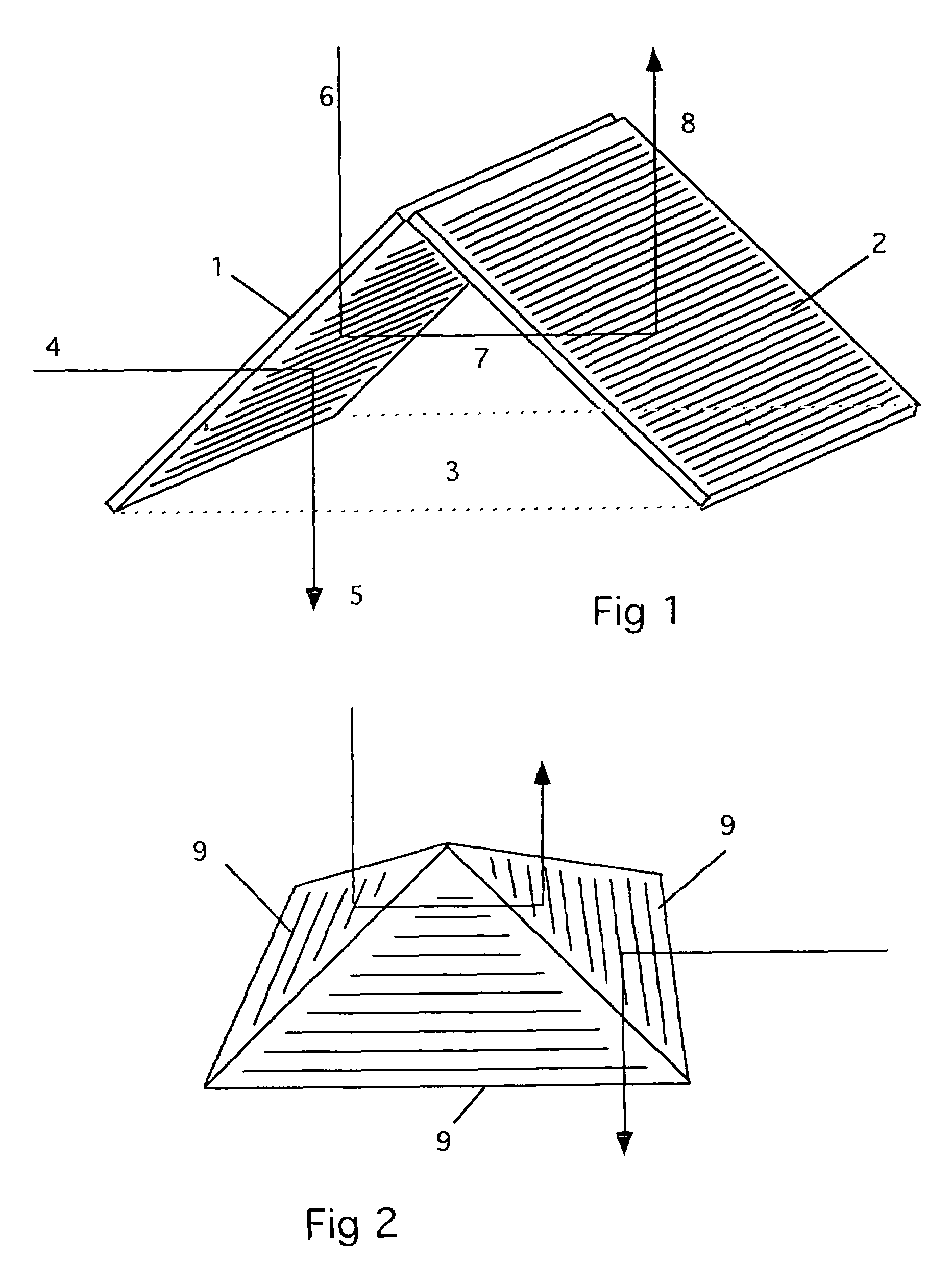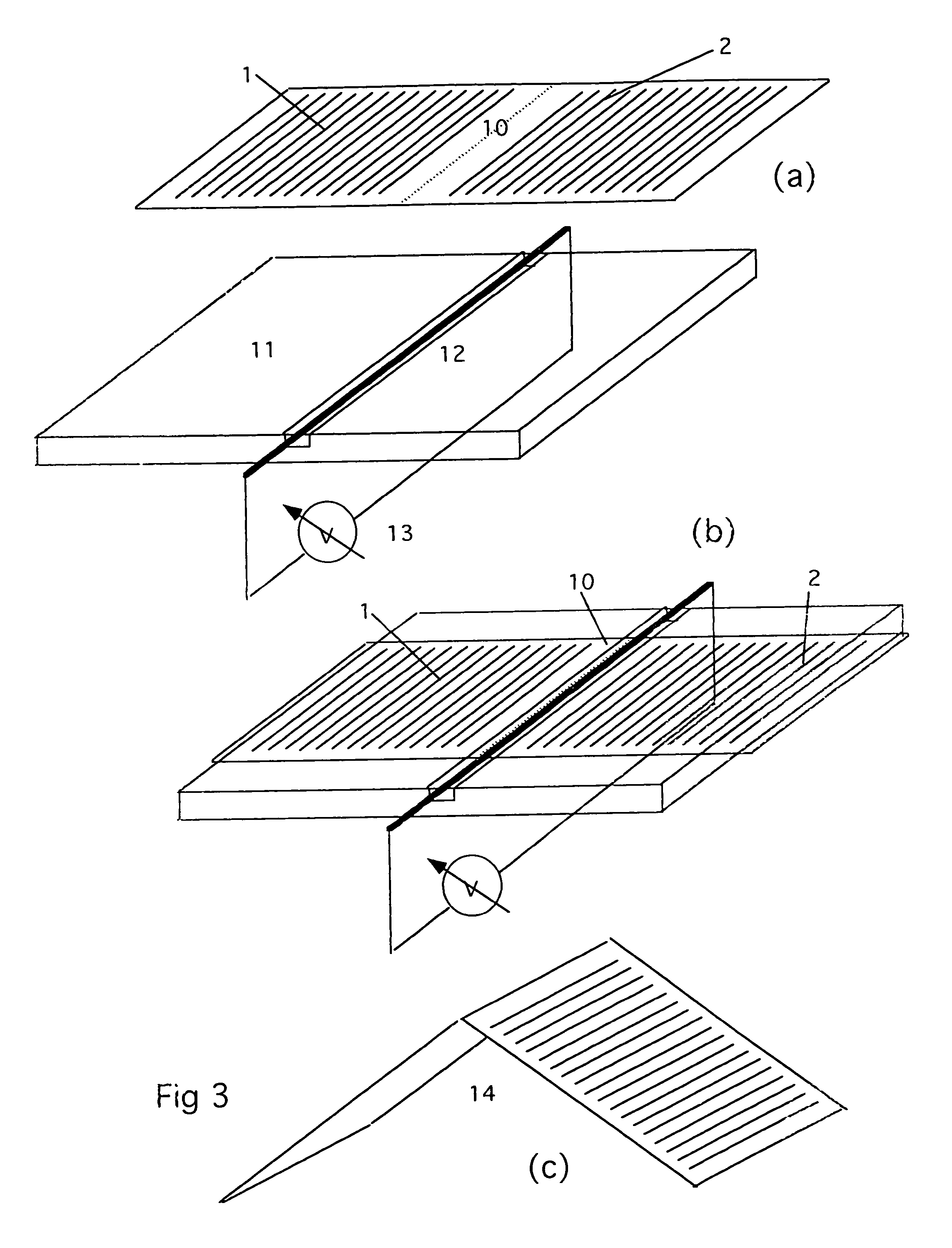Methods for producing three dimensional, self-supporting, light redirecting roof lighting systems
a roof lighting system and self-supporting technology, applied in the direction of roof coverings, lighting and heating equipment, building components, etc., can solve the problems of reducing the transmission of high-angle light through the roof lighting system to the room below, holograms and diffraction gratings produced photographically tend to degrade in sunlight, and deficient use of holographic or diffractive light redirecting plates
- Summary
- Abstract
- Description
- Claims
- Application Information
AI Technical Summary
Benefits of technology
Problems solved by technology
Method used
Image
Examples
Embodiment Construction
.
[0018]The first method of this invention is illustrated by the method for producing the simplest geometrical form of angle selective roof lighting system, that is, a saddle form of angle-selective lighting system. The method is described with reference to FIG. 3. FIG. 3 (a) shows a flat rectangular transparent acrylic sheet with two arrays of parallel laser cuts 1 and 2 made through two sections of the flat sheet. A narrow strip of solid plastic 10 is left between the two arrays of laser cuts 1 and 2. The laser cuts may penetrate right through the sheet, or, may be cut partly through the sheet so that one side of the sheet remains solid. Typical depth of the laser cuts would be 6 mm and the typical spacing between each laser cut in each array of parallel cuts would be in the range 3 mm to 4 mm. If the 6 mm deep cuts were made partly through a 10 mm thick sheet of acrylic then 4 mm of the sheet would remain solid and would provide one solid, non-permeable surface to the laser cut sh...
PUM
| Property | Measurement | Unit |
|---|---|---|
| depth | aaaaa | aaaaa |
| depth | aaaaa | aaaaa |
| thick | aaaaa | aaaaa |
Abstract
Description
Claims
Application Information
 Login to View More
Login to View More - R&D
- Intellectual Property
- Life Sciences
- Materials
- Tech Scout
- Unparalleled Data Quality
- Higher Quality Content
- 60% Fewer Hallucinations
Browse by: Latest US Patents, China's latest patents, Technical Efficacy Thesaurus, Application Domain, Technology Topic, Popular Technical Reports.
© 2025 PatSnap. All rights reserved.Legal|Privacy policy|Modern Slavery Act Transparency Statement|Sitemap|About US| Contact US: help@patsnap.com



